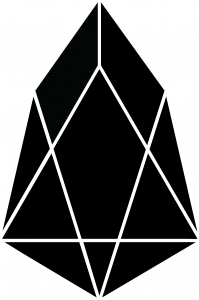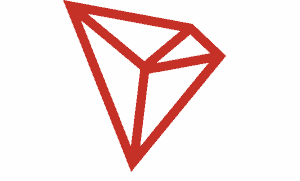On this Page:
Decentralized applications (dApps) are apps that operate on blockchain networks using smart contracts. This means no single company controls them, and anyone with internet access and a crypto wallet can interact with them.
Outwardly, a dApp may not look dissimilar to a centralized application. If you’ve swapped tokens on Uniswap, played a blockchain game like Axie Infinity, or voted on a DAO proposal via Snapshot, you’ve already interacted with a dApp.
This guide will give you a clear look at dApps, how they actually work behind the scenes, where people are using them right now, and what you need to know about this cornerstone of Web3.
Key Takeaways
- dApps run on blockchain networks using smart contracts, meaning no central authority controls access or operations. Once deployed, they function autonomously.
- Users typically control their data, assets, and identity through wallets, rather than relying on centralized service providers.
- Most dApps are open-source and all on-chain activity is publicly verifiable.
Understanding dApps
A dApp is software that interacts with blockchain-based smart contracts instead of centralized servers. These contracts execute automatically based on rules written in code. Most dApps are open source, and updates often happen through decentralized governance, such as token-holder voting.
Tokens are integral to many dApps. They can be used to pay for network fees, reward users, or vote on protocol changes. Public blockchains also ensure transparency, with every transaction visible and verifiable on-chain.
Comparing dApps to Traditional Apps
| Feature | Traditional Apps | Decentralized Apps (dApps) |
|---|---|---|
| Control | Centralized by a company | Decentralized, often community-governed |
| Backend | Runs on private servers | Runs on blockchain nodes |
| Data Storage | On company servers | On-chain or controlled via user wallets |
| Access | Requires sign-up or approval | Open to anyone with a crypto wallet |
| Downtime | Can go offline if servers fail | Online as long as the blockchain is live |
What’s the Technology Behind dApps?
dApps do not run on regular servers. They use blockchain networks and smart contracts to stay online without anyone in charge. Here is a quick breakdown of how it all fits together.
Smart Contracts
Smart contracts are the core of any dApp. They are pieces of code stored on a blockchain that handle everything automatically. Once a smart contract is live, it runs exactly as it was written. If you want to change it, you usually need a community vote or a strict upgrade process.
Smart contracts can do things like send money when conditions are met, create digital ownership records, or even manage voting systems.
Example: When you use Uniswap, you’re interacting directly with smart contracts that execute trades and manage liquidity, with no intermediary involved.
What Can dApps Be Used For?
dApps are already changing different parts of the internet. Here’s where they are making the biggest impact right now.
Financial Services (DeFi)
DeFi dApps let you borrow, lend, earn interest, and trade crypto without banks or brokers. Apps like Aave and Compound replace traditional lending, allowing you to deposit crypto into a smart contract and start earning or borrowing without paperwork or credit checks.
Decentralized exchanges like Uniswap let people swap tokens without giving up control to an exchange. Stablecoins like DAI keep their value stable, giving users more tools to manage risk.
Gaming and Collectibles
Games and collectibles are another big area. Projects like Axie Infinity let players own their characters and gear. You can battle, breed, or trade items, and everything is stored on the blockchain.
NFT marketplaces like OpenSea are examples of dApps that allow users to buy and sell digital art, game items, and collectibles.
Social Media and Content Platforms
New dApps are trying to fix the problems with traditional social media. Platforms like Lens Protocol let you create a profile that you control, not the platform.
Publishing platforms like Mirror let writers own their work and get paid directly by readers. Creators can control their content and monetize without intermediaries.
Identity and Governance
Identity dApps help prove who you are without handing over all your personal information. Proof of Humanity is one project working on verified identities that stay in your control.
Governance dApps, like Snapshot, let users vote on changes to protocols, DAOs, and communities. Every vote is recorded on the blockchain, making decisions transparent and fair.
What are the Pros and Cons of dApps?
Like any technology, dApps come with trade-offs. Here’s what they do well, and where they still fall short.
- No single point of failure. Even if one node goes down, the app keeps running.
- Transparent and trustless with all transactions and rules on-chain.
- No signup, approval process, or gatekeeping.
- With dApps, you often own your data, assets, and interactions.
- Many dApps are built and run by DAOs, letting users help with decisions and guide development.
Disadvantages
- High fees and slow confirmations are still a problem, especially on Ethereum.
- Most dApps aren’t beginner-friendly.
- If something breaks or you make a mistake, you’re mostly on your own.
- Some dApps are poorly built, abandoned, or straight-up scams.
- Rules around dApps and tokens are unclear in many countries.
Comparing Different DApp Blockchains
Ethereum is the original smart contract platform and remains the most widely used for dApps. It boasts the largest developer community and a robust ecosystem including DeFi, NFTs, DAOs, and more. Its security and decentralization are well-established, but its base layer struggles with high gas fees and limited throughput. These challenges are being addressed by Layer-2 scaling solutions like Arbitrum, Optimism, and zk-rollups, which significantly reduce costs and increase transaction speeds while leveraging Ethereum’s security.
Tron is known for its high throughput and negligible transaction fees, making it appealing for use cases like gaming, gambling, and micropayments. It uses a delegated proof-of-stake (DPoS) model that allows for fast transactions, but it has faced criticism for centralization and a relatively smaller developer community. While it once surged in popularity, especially in Asia, its dApp ecosystem has stagnated somewhat compared to other chains.

EOS uses a DPoS consensus model to provide fast and fee-less transactions, positioning itself as a developer-friendly platform. It supports dApps written in C++ and initially promised up to 4,000 transactions per second (TPS), though in practice, real-world throughput tends to be significantly lower. EOS was one of the early competitors to Ethereum, but its momentum has slowed due to governance issues and a decline in active developer engagement.

Solana is designed for speed and scalability, using a unique proof-of-history (PoH) combined with proof-of-stake (PoS) to achieve high throughput and low fees. It is especially popular among DeFi and NFT developers who require fast execution and low latency. However, Solana has experienced several high-profile network outages, raising concerns about its reliability and decentralization. Despite this, its ecosystem continues to grow rapidly.
Polkadot is a next-generation blockchain platform based on a central relay chain and multiple parachains, which are independent blockchains that can communicate with each other. This design allows for parallel processing of transactions and specialized chains optimized for different applications. Polkadot uses a nominated proof-of-stake (NPoS) consensus mechanism and provides developers with Substrate, a modular framework for building custom blockchains. Although its technical foundation is strong, Polkadot’s dApp ecosystem is still emerging, with many projects in development or early stages.
Cardano is a research-driven blockchain platform that prioritizes formal methods, peer-reviewed development, and a layered architecture. It uses the Ouroboros proof-of-stake protocol, which aims to balance energy efficiency with security. Cardano’s smart contract capabilities (introduced via the Alonzo upgrade) are relatively recent, and the ecosystem is still maturing. Plutus, Cardano’s smart contract language, is based on Haskell, which offers strong correctness guarantees but has a steep learning curve. As a result, the pace of dApp development has been slower compared to other platforms, though projects in areas like identity, education, and DeFi are gradually taking shape.
| Platform | Consensus Mechanism | Key Strengths | Limitations | Developer Tools / Languages | Ecosystem Maturity |
|---|---|---|---|---|---|
| Ethereum | Proof-of-Stake (with Layer-2s) | Most mature dApp ecosystem, strong security, rich tooling | High base-layer fees, limited throughput without L2 | Solidity, Vyper; tools like Hardhat, Truffle | Very High |
| Tron | Delegated Proof-of-Stake (DPoS) | High throughput, low fees, strong for high-volume apps | Perceived centralization, limited developer traction | Solidity (via TronVM) | Moderate |
| EOS | Delegated Proof-of-Stake (DPoS) | Fast, feeless transactions, C++ support | Real TPS lower than claimed, declining dev interest | C++, EOSIO tools | Low to Moderate |
| Solana | Proof-of-History + PoS | High speed, low cost, growing NFT/DeFi use | Network instability, centralization concerns | Rust, C, Anchor framework | High (but volatile) |
| Polkadot | Nominated Proof-of-Stake (NPoS) | Interoperability, custom parachains, Substrate framework | Complex architecture, young ecosystem | Rust (via Substrate), ink! for smart contracts | Emerging |
| Cardano | Ouroboros Proof-of-Stake | Formal, peer-reviewed development, secure architecture | Slower development, smaller toolset, fewer dApps | Haskell (Plutus), Marlowe for finance | Emerging |
The Future of dApps
dApps are rapidly evolving. Layer-2 solutions and cross-chain interoperability are improving scalability and usability. User interfaces and wallet tools are also becoming more intuitive. While challenges remain, dApps are already transforming finance, gaming, content creation, and governance.
Long-term, we may see decentralized applications become the foundation for voting systems, decentralized identity, and even health record management, granting users greater control over their digital lives.
Decentralized Applications (dApps) FAQs
What is a dApp, and how does it work?
What are some popular examples of dApps?
How are dApps different from regular applications?
What are the benefits of using dApps?
How can I start using dApps?
Are dApps legal?
Are dApps regulated?
What role do tokens play in dApps?
References
- Introduction to dApps – Ethereum.org
- Protocol Docs – Aave
- Documentation – Compound



